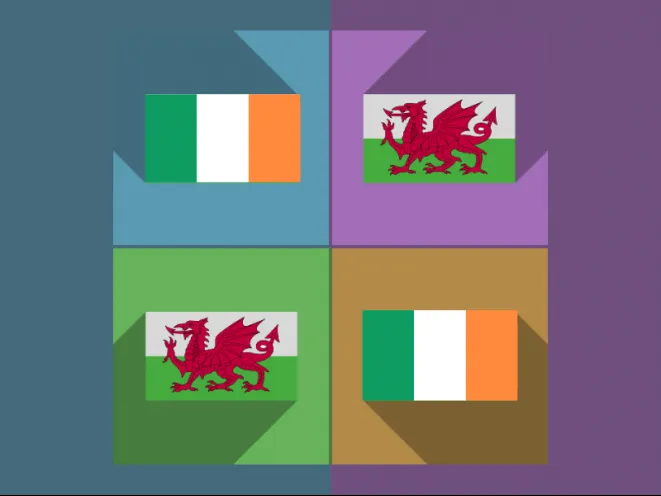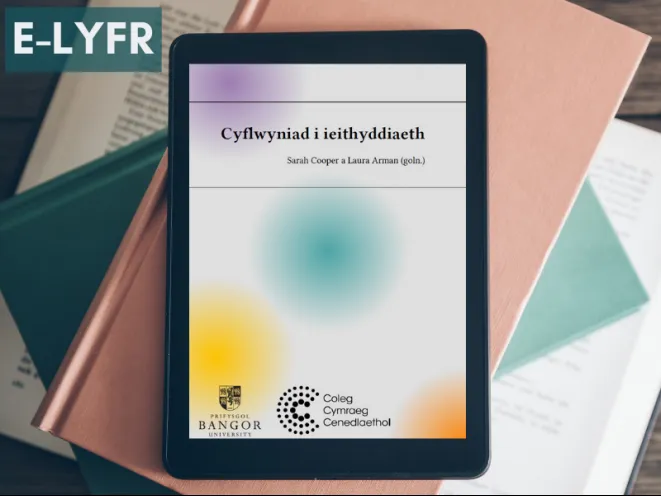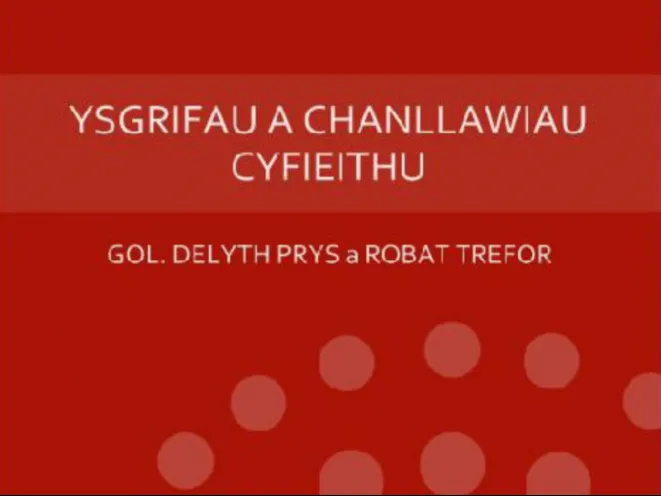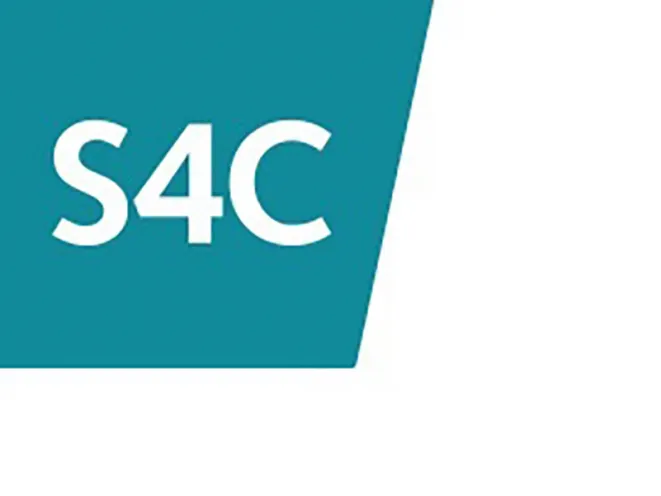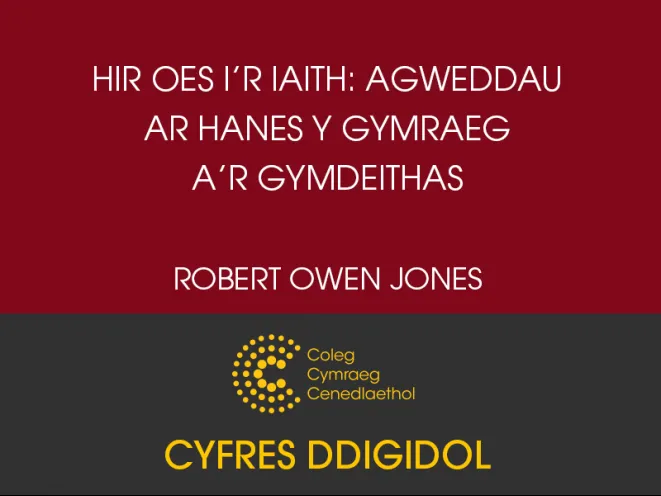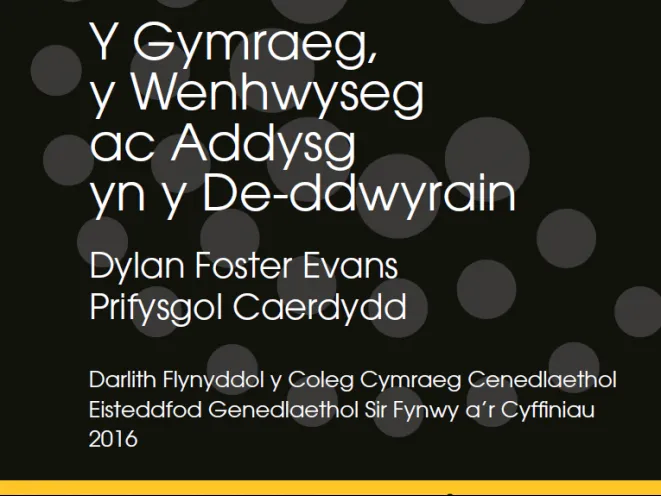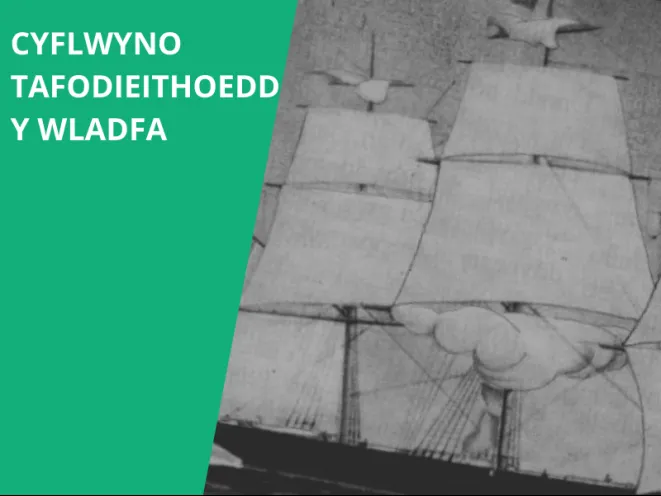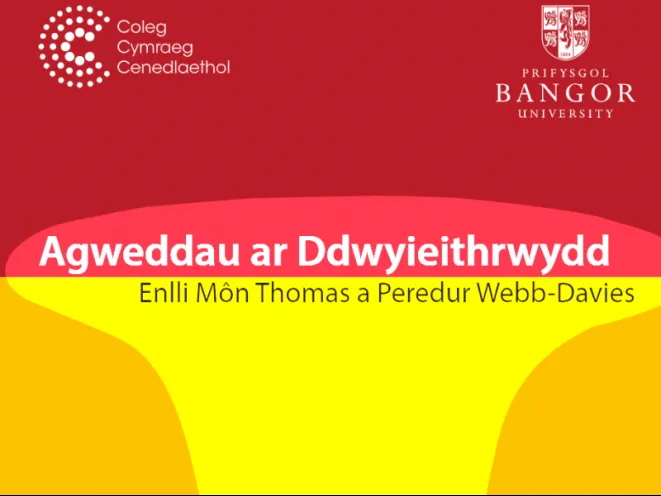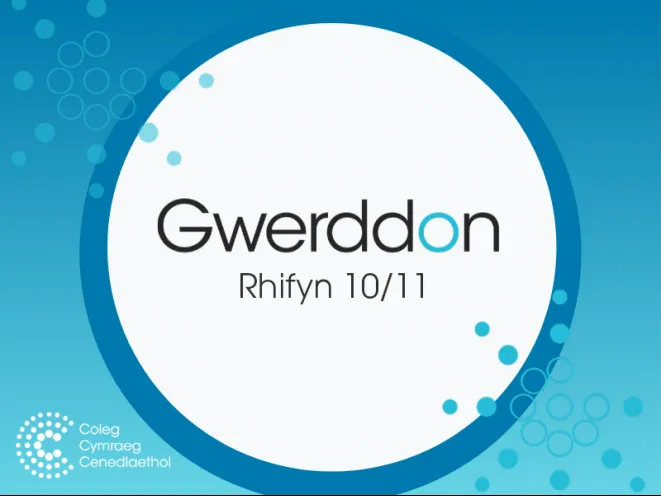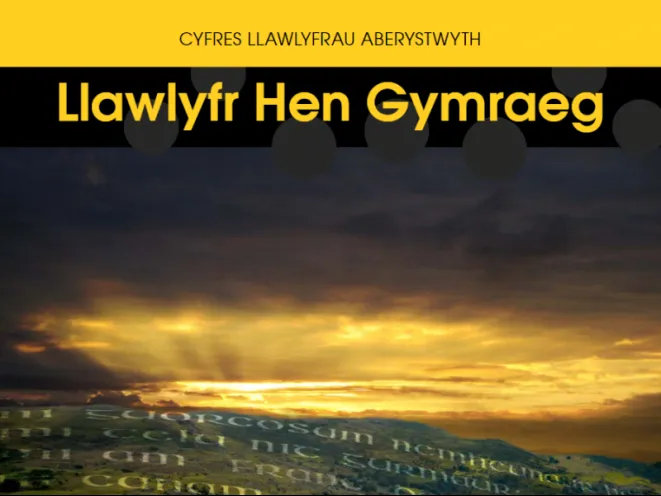The purpose of this booklet is to share good practice in developing educational provision and teaching in a minoritised language in universities. The good practice covered in this booklet come from focus groups held with lecturers and students looking at their experiences of Welsh and Irish medium education at universities in Wales and Ireland. This booklet discusses: good practice in encouraging students to study in a minoritised language developing provision in a minoritised language; teaching in a minoritised language supporting students in a minoritised language assessments in a minoritised language normalising the use of a minoritised language among students. We anticipate that this booklet will be useful not only for lecturers and providers of higher education in these countries, but also for lecturers, higher education providers and providers in other education sectors in other parts of the world who are developing educational provision and teaching in a minoritised language.
Good Practice in Developing Educational Provision and Teaching in a Minoritised Language in Universities: Exam...
Introduction to Linguistics
"Cyflwyniad i Ieithyddiaeth" is an introduction to the essentials of Linguistics for students who have no background, or not a great deal of background in studying language and the subjects of Linguistics (e.e. the sounds of languages, morphology and syntax, meaning, multilingualism and sociolinguistics).
Ysgrifau a Chanllawiau Cyfieithu – Delyth Prys a Robat Trefor
Cyfres o saith erthygl gan arbenigwyr yn y maes, yn trafod agweddau ar gyfieithu, technolegau cyfieithu a hanes a sefyllfa'r diwydiant yng Nghymru. Mae'r cyfraniadau yn seiliedig ar waith ymchwil y cyfranwyr, ac ar gyflwyniadau a roddwyd ganddynt wrth hyfforddi myfyrwyr a chyfieithwyr mewn sesiynau ar gyfer Cymdeithas Cyfieithwyr Cymru, y Coleg Cymraeg Cenedlaethol, a chwrs Tystysgrif Ôl-radd Astudiaethau Cyfieithu a Thechnoleg Cyfieithu Prifysgol Bangor. Cyfrol wreiddiol sydd ar gael ar ffurf e-lyfr yn unig.Mae'r penodau fel a ganlyn: Pennod 1: Cyd-destun gwleidyddol a chymdeithasol cyfieithu yn y Gymru gyfoes – Tegau Andrews, Pennod 2: Cyweiriau Iaith y Gymraeg – Robat Trefor, Pennod 3: Geiriaduron, termiaduron ac adnoddau defnyddiol eraill – Delyth Prys, Pennod 4: Meddalwedd a Thechnoleg Cyfieithu – Gruffudd Prys, Delyth Prys, Pennod 5: Golygu a Phrawfddarllen – Mared Roberts, Pennod 6: Theori ac ymarfer cyfieithu yng Nghymru heddiw – Sylvia Prys Jones,Pennod 7: Oes Rhywun yn Darllen? – Heini Gruffudd.
Y Pymtheg Olaf (2014)
Bydd cyn-flaenasgellwr Cymru a Llanelli, Dafydd Jones, yn mynd ar drywydd y Pymtheg Olaf mewn rhaglen arbennig fydd yn dilyn hanes tîm rygbi Cymru 1914. Roedd tîm rygbi rhyngwladol Cymru yn 1914 yn dîm hynod lwyddiannus ac yn cynnwys llawer o'r chwaraewyr a oedd wedi ennill tair Camp Lawn rhwng 1908 a 1911. Caent eu hadnabod fel carfan rymus tu hwnt yn gorfforol, llysenw eu blaenwyr oedd 'the terrible eight'. Roedd hyn mewn cyfnod ymhell cyn i'r gêm fynd yn broffesiynol, ac roedd sawl crefft gwaith yn y tîm, gyda'r gweinidog Jenkin Alban Davies o Aberaeron yn gapten ar y garfan. Ond yn ystod y Rhyfel Mawr a ddechreuodd yn 1914, ymrestrodd naw ohonynt yn y fyddin, chwe wythnos wedi eu gêm ryngwladol olaf yn erbyn Iwerddon. Tinopolis, 2014. Oherwydd rhesymau hawlfraint bydd angen cyfrif Coleg Cymraeg i wylio rhaglenni Archif S4C. Mae modd ymaelodi ar wefan y Coleg Cymraeg Cenedlaethol i gael cyfrif.
Taith yr Iaith (2006)
Gwyneth Glyn sy’n dilyn taith yr iaith Gymraeg o’i gwreiddiau yn Rwsia hyd ei sefyllfa bresennol ar ddechrau'r unfed ganrif ar hugain. Oherwydd rhesymau hawlfraint bydd angen cyfrif Coleg Cymraeg i wylio rhaglenni Archif S4C. Mae modd ymaelodi ar wefan y Coleg Cymraeg Cenedlaethol i gael cyfrif.
Hir Oes i'r Iaith – Robert Owen Jones
Mae iaith a chymdeithaseg yn gwbl ddibynnol ar ei gilydd. Ni all iaith fodoli heb bobl i'w siarad ac ni all unrhyw gymuned weithredu'n ystyrlon heb iaith. Yn y gyfrol hon edrychir ar y berthynas rhwng y ddwy wedd holl bwysig ar fywyd dyn gan geisio darlunio'r effaith a gaiff cyfnewidiadau cymdeithasol ar barhad a ffyniant iaith. Edrychwn ar y Gymraeg dros bedair canrif ar ddeg gan geisio dangos sut y gall digwyddiadau unigol lunio tynged iaith, a sut y gall newid mewn ymagweddiad roi anadl einioes mewn sefyllfa a oedd yn bur anobeithiol. Y Gymraeg sydd dan y chwyddwydr, ond cymherir y sefyllfa yng Nghymru â'r hyn a geir mewn gwledydd eraill. Dadleuir mai'r rhan bwysicaf ym mhroses adfer iaith yw deall pa ffactorau sy'n achosi erydiad. Yna gellir gweithredu polisi iaith a ddylai ddwyn ffrwyth, gan sicrhau 'hir oes i'r iaith'.
Darlith Flynyddol 2016: Y Gymraeg, y Wenhwyseg ac Addysg yn y De-ddwyrain
Darlith Flynyddol y Coleg Cymraeg Cenedlaethol 2016: Y Gymraeg, y Wenhwyseg ac Addysg Gymraeg yn y De-ddwyrain gan Dylan Foster Evans. Traddodwyd y ddarlith yn Eisteddfod Genedlaethol Sir Fynwy a'r Cyffiniau ar ddydd Mawrth 2 Awst 2016.
Cyflwyno Tafodieithoedd y Wladfa
Croeso i Cyflwyno Tafodieithoedd y Wladfa, adnodd gan Dr Iwan Wyn Rees, Prifysgol Caerdydd. Yr amcan yn syml yw cyflwyno am y tro cyntaf amrywiadau tafodieithol cyfoes y Wladfa Gymreig ym Mhatagonia. Cewch gyfle yma i wrando ar Gymraeg llafar gwahanol fathau o siaradwyr o’r Wladfa, ac i gyd-fynd â’r clipiau hynny, ceir nodiadau manwl yn tynnu sylw at amrywiaeth o nodweddion tafodieithol.
Agweddau ar Ddwyieithrwydd
E-lyfr newydd gan yr Athro Enlli Môn Thomas a Dr Peredur Webb-Davies o Brifysgol Bangor. Ac ystyried bod mwy o ieithoedd gwahanol nag o wledydd yn y byd, mae'n anochel bod ieithoedd yn dod i gysylltiad â'i gilydd mewn rhyw ffordd ac ar ryw adeg yn ystod eu bodolaeth. O ganlyniad, poblogaeth amlieithog ei naws yw'r rhan helaethaf o boblogaeth y byd. Er nad oes ffigyrau penodol (neu ddull casglu data digon ymarferol) yn nodi'r union ganran neu union nifer y siaradwyr uniaith a dwyieithog a geir, mae meddu ar ddwy neu fwy o ieithoedd yn ddarlun teg o'r 'norm' ieithyddol cyfredol ar gychwyn yr 21ain ganrif. O'r ychydig dros 6,000 o ieithoedd sy'n parhau i fodoli ledled y byd, prin bod unrhyw un wedi'i hynysu rhag pobloedd neu gymdeithasau ieithyddol eraill. Daw pob iaith bron i gysylltiad ag iaith arall, ond nid pawb sydd o'r farn fod hynny'n dda o beth! Bwriad y llyfr hwn yw eich cyflwyno i fyd y siaradwr dwyieithog, ac i herio nifer o fythau ynglÅ·n ag anfanteision - ac, yn wir, manteision - dwyieithrwydd. Y gobaith yw y bydd y darllenydd, o ddarllen y gyfrol hon, yn deall yn well natur ac anghenion unigolion sydd yn meddu ar sgiliau mewn dwy iaith.
The effect of language on physical rehabilitation: A study of the influence of language on the effectiveness o...
In an area of Wales where 50% of the population is bilingual one community physical rehabilitation service had no Welsh-speaking therapists. An internationally standardised outcome measure was used to assess the effectiveness of rehabilitation in this area. This revealed that Welsh speaking patients had significantly poorer results from rehabilitation than non-Welsh speakers (p<0.05), while there was no significant difference where the therapists were bilingual. The results suggest that therapists’ ability to speak patients’ first language impacts on therapy effectiveness. The percentage of individuals who could speak Welsh referred (by health or social care professionals) was compared with the percentage of Welsh speakers which would have been anticipated given the percentage in the general population. Significantly fewer Welsh speakers were referred to the rehabilitation service than the anticipated percentage (p<0.001). Whilst this suggests professionals’ inability to speak Welsh may impact negatively on access to services for Welsh speakers, there may be other multifactorial psycho-social reasons to consider.
An analysis of the use of code-switching by student teachers in a bilingual Secondary School class: A case fro...
The literature contains many studies on code-switching. The socio-cultural method of studying networking in the classroom as described by Mercer (2000) is based on a detailed analysis of the discourse of language classes. Mercer noted a number of linguistic techniques used by teachers. This article analyses the views of trainee-teachers on code-switching as a practice in the classroom. In the study, the class practice of two trainee teachers, bilingual in Welsh and English, was examined. The two were observed and their teaching recorded. Interviews were also held with the trainee teachers to ask them about their attitudes to the use of the first language in a secondary-school class where English is a second language. The collected data is analysed using Critical Discourse analysis methods. Specific consideration is given to what extent the trainee teachers succeeded in teaching in a way that was within the attainment of the bilingual pupils under their care. The occasions when the teachers switched from English to Welsh for a minute could be seen to correspond to the code-switching functions noted by Camilleri. The code-switching suggests a legitimate way of using common linguistic resources as a teaching support in the classroom.
Llawlyfr Hen Gymraeg – Alexander Falileyev
Dyma'r disgrifiad cynhwysfawr cyntaf un o Hen Gymraeg (iaith y 9fed ganrif hyd ddechrau'r ddeuddegfed) i ymddangos yn yr iaith Gymraeg. Mae'n addasiad (gan yr awdur ei hunan) o Gramadeg Hen Gymraeg, Alexander Falileyev, a gyhoeddwyd yn Rwsieg yn 2002, ac yn Ffrangeg yn 2008. Yn ogystal â throsi'r gwaith i'r Gymraeg, mae Dr Falileyev wedi'i addasu ar gyfer cynulleidfa Gymraeg, ac wedi ymgorffori ffrwyth yr ymchwil diweddaraf ar y testunau hyn (peth ohono eto i'w gyhoeddi). Mae hyn yn golygu y bydd o ddiddordeb i ysgolheigion profiadol yn ogystal â myfyrwyr a lleygwyr. Mae'n cynnwys disgrifiadau manwl o'r testunau hysbys, gyda llyfryddiaeth lawn, penodau ar ffonoleg, gramadeg a chystrawen yr iaith, a detholiad o destunau golygedig gyda nodiadau cynhwysfawr a geirfa. Mae'r llyfr hwn yn rhoi cyfle, am y tro cyntaf, i'r Cymry ddod i adnabod rhai o'r enghreifftiau cynharaf hysbys o destunau yn eu hiaith. Mae Dr Falileyev, yn enedigol o St Petersburg, Rwsia, yn arbenigydd ar yr ieithoedd Celtaidd. Mae wedi cyhoeddi'n helaeth ar enwau lleoedd a phersonol Celtaidd o Ewrop yn yr hen gyfnod, ac ar iaith a llenyddiaeth Cymru'r Oesoedd Canol Golygydd y Gyfres: Dr Simon Rodway, Prifysgol Aberystwyth.

